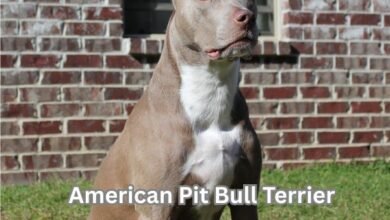
The pug skull has some truly unique features, including its flat face, short snout, and large, expressive eyes. These distinct traits set pugs apart from many other dog breeds and give them their characteristic look.
For pug owners, knowing about these features is crucial for understanding their pet’s health and care needs. This article will explore how the pug skull’s features compare to those of other breeds, helping you see what makes your pug special and why these differences matter. Let’s join us as we are going to explore everything about pug skull.
Distinctive Brachycephalic Shape
The pug’s unique brachycephalic skull shape sets it apart from many other dog breeds. This distinctive anatomy, characterized by a flat face and short snout, has significant effects on both appearance and health.
Flat Face
- Description: The pug’s broad, flat face is one of its most recognizable features. This flattened facial profile is a hallmark of the brachycephalic breed group, which includes other breeds like bulldogs and boxers.
- Aesthetic Appeal: The flat face gives pugs their charming and distinctive appearance, with prominent features such as large, expressive eyes and a characteristic wrinkled forehead.
Short Snout
- Impact on Appearance: The short length of the pug’s snout contributes to its unique look, with a compressed muzzle that contrasts sharply with breeds that have longer, more elongated snouts. This shortened snout also leads to a reduced nasal bridge.
- Functional Implications: The short snout affects the overall structure of the face, influencing not only appearance but also the alignment of teeth and the placement of the eyes.
Impact on Breathing
- Respiratory Function: The brachycephalic shape of the pug’s skull can significantly impact respiratory function. The short snout and flattened face result in constricted nasal passages and an altered airway structure.
- Health Concerns: This anatomical arrangement can lead to breathing difficulties, especially in warm or humid conditions. Pugs are prone to conditions like Brachycephalic Obstructive Airway Syndrome (BOAS), which can cause symptoms such as snoring, wheezing, and labored breathing.
Understanding the distinctive brachycephalic shape of the pug skull helps in appreciating their unique appearance while also highlighting the health considerations associated with their anatomy.
Prominent Eye Structure
The pug’s eye structure is as distinctive as its flat face, with its prominent and forward-set eyes playing a crucial role in its overall appearance and health. This unique eye positioning brings both aesthetic appeal and specific health considerations.
Eye Position
- Forward Set: The pug’s eyes are set forward in the skull, contributing to their large, round, and prominent appearance. This positioning enhances the breed’s expressive and endearing look, making their eyes a focal point of their facial features.
- Prominence: The forward-set eyes are a defining characteristic of the pug, making them appear more prominent compared to breeds with less protruding eyes. This trait is a result of the breed’s brachycephalic skull structure.
Risks of Protrusion
- Potential Issues: The bulging nature of the pug’s eyes can lead to several health risks. Protruding eyes are more susceptible to injury from accidental trauma, such as scratches or bumps.
- Dryness and Irritation: Protruding eyes can also lead to dryness and irritation because the eyelids may not fully cover the eye surface. This condition can cause discomfort and increase the risk of developing eye infections or conjunctivitis.
Protective Features
- Skull Structure Limitations: While the pug’s skull shape contributes to its eye prominence, it also limits the protection that the eyes receive. The shallow eye sockets offer less physical protection compared to breeds with deeper-set eyes.
- Eye Care: Regular care and attention are necessary to manage eye health. Protecting the eyes from injury and monitoring for signs of dryness or infection are essential steps in maintaining overall eye health.
The prominent eye structure of the pug, while adding to its distinctive appearance, necessitates careful consideration of potential health risks and protective measures. Understanding these aspects can help pug owners provide better care and prevent common eye-related issues.
Unique Bone Structure
The unique bone structure of the pug’s skull is central to its distinct appearance and functionality. From the cranial bones to the jaw alignment and sutures, each component plays a significant role in defining the pug’s characteristic look and impacting its overall health.
Cranial Bones
- Frontal Bone: The frontal bone forms the forehead and upper part of the eye sockets. In pugs, the frontal bone contributes to the flat, broad appearance of the skull and influences the positioning of the eyes.
- Maxilla: The maxilla is the upper jawbone that supports the teeth and forms part of the facial skeleton. In pugs, the maxilla is shorter compared to many other breeds, contributing to the pug’s distinctive short snout.
- Other Bones: Additional cranial bones, such as the parietal and occipital bones, contribute to the overall structure of the skull, although their roles are less pronounced in the flat brachycephalic skull compared to other breeds.
Jaw Alignment
- Jaw Structure: The pug’s jaw is relatively compact due to the brachycephalic skull shape. The short length of the maxilla and mandible results in a unique dental arrangement.
- Dental Arrangement: The pug’s teeth are closely spaced, and the compact jaw can lead to dental crowding and misalignment. This arrangement often requires special attention to ensure proper oral health.
Sutural Details
- Sutures and Joints: The sutures are the fibrous joints connecting the cranial bones. In pugs, the sutures contribute to the overall stability of the skull while accommodating the breed’s characteristic shape.
- Impact on Shape: The sutural details, along with the positioning of the cranial bones, help shape the pug’s skull. These structural aspects are crucial for understanding the pug’s distinctive appearance and function, affecting everything from facial expression to health concerns.
The unique bone structure of the pug’s skull is integral to its breed identity. Understanding the roles of the cranial bones, jaw alignment, and sutural details provides insight into both the pug’s distinctive appearance and the health considerations associated with their unique anatomical features.
Dental Arrangement and Challenges
The dental arrangement in pugs is a notable aspect of their unique skull structure. Due to the compact and brachycephalic nature of their skull, pugs often face specific dental challenges that require careful management.
Tooth Placement
- Typical Alignment: In pugs, the teeth are closely packed due to the short length of the jaw. The compact nature of the maxilla and mandible means that the teeth have limited space, often leading to a crowded appearance.
- Spacing Issues: The reduced space in the mouth can result in misalignment, with teeth potentially overlapping or growing in an irregular pattern.
Common Dental Issues
- Overcrowding: The lack of space in the pug’s mouth can lead to overcrowding, where teeth are squeezed together. This can cause discomfort and difficulty in maintaining oral hygiene.
- Misalignment: The compact jaw can lead to issues such as malocclusion (improper bite), where the upper and lower teeth do not align correctly. This can affect the pug’s ability to chew properly and may lead to dental problems.
- Periodontal Disease: Pugs are prone to periodontal disease due to the close proximity of teeth and the challenges in cleaning the teeth effectively. Gum disease can result from the buildup of plaque and tartar.
Care Recommendations
- Regular Dental Check-Ups: Frequent veterinary check-ups are essential for monitoring dental health. Professional cleanings can help manage plaque and tartar buildup and address any misalignment issues.
- Daily Brushing: Regular brushing of the pug’s teeth with a pet-safe toothpaste can help prevent plaque buildup and maintain oral hygiene.
- Dental Toys and Chews: Providing dental chews and toys can help reduce plaque and keep the teeth clean. These products are designed to stimulate chewing and help clean the teeth naturally.
- Monitoring: Watch for signs of dental discomfort, such as difficulty eating, bad breath, or swollen gums. Early detection of issues can prevent more serious problems from developing.
Understanding the dental arrangement and challenges in pugs is crucial for maintaining their oral health. By addressing common issues and following care recommendations, pug owners can ensure their pets have healthy teeth and gums, contributing to their overall well-being.
Influence on Overall Health
The unique structure of the pug skull significantly impacts various aspects of their overall health. The brachycephalic design, while giving pugs their distinctive appearance, can lead to several health considerations that affect their daily life and comfort.
Breathing Difficulties
- Restricted Airflow: The flat and broad skull of the pug results in shortened nasal passages and a compressed airway. This can lead to conditions such as Brachycephalic Obstructive Airway Syndrome (BOAS), where the airway is partially obstructed, making breathing more labored.
- Exercise Intolerance: Due to compromised airflow, pugs may struggle with strenuous activities or prolonged exercise. This can lead to panting, excessive heat, or shortness of breath during physical exertion.
Temperature Regulation
- Heat Sensitivity: Pugs have limited ability to cool themselves through panting due to their reduced airway efficiency. This makes them more susceptible to heatstroke, especially in hot weather or during vigorous activities.
- Cold Sensitivity: The short snout and less effective nasal passages can also impact a pug’s ability to warm the air they breathe. As a result, pugs may be more sensitive to cold temperatures and can be prone to respiratory issues in chilly weather.
General Comfort
- Discomfort During Sleep: The brachycephalic structure can cause obstructive sleep apnea, where the airway becomes partially blocked during sleep. This can lead to disrupted sleep patterns and general discomfort.
- Activity Limitations: Pugs may experience discomfort or fatigue more quickly than other breeds due to their breathing difficulties. This can affect their overall activity levels and quality of life.
Managing Health Impact:
- Avoid Overexertion: Limit intense physical activities and ensure that pugs have plenty of breaks and access to water during exercise.
- Climate Control: Provide a comfortable environment with temperature control. Use fans, air conditioning in hot weather, and warm bedding in colder conditions.
- Regular Vet Check-Ups: Regular veterinary visits can help monitor and manage health issues related to the pug’s skull structure, including breathing difficulties and temperature regulation.
Understanding how the pug skull affects overall health helps in providing better care and ensuring a comfortable life for these unique dogs. Addressing these issues proactively can help maintain their well-being and enhance their quality of life.




